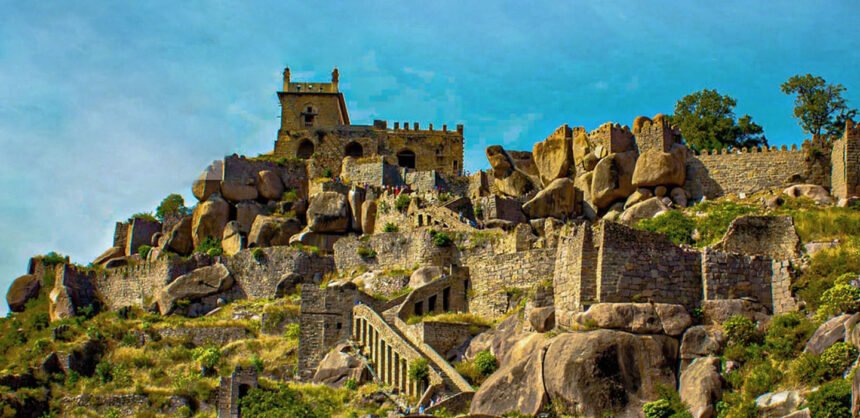The Magnificent Golconda Fort: A Testament to Architectural Brilliance
Located in Hyderabad, India, the Golconda Fort is a fascinating architectural wonder that has weathered the test of time. Built several centuries ago, this massive fort has come to represent the area. Given that it takes into account the work of several dynasties and kings, the subject of who constructed the Golconda Fort is an intriguing one.
The Earlier History
The Kakatiya dynasty, who governed the area from the 12th to the 14th century, is credited with building the Golconda Fort. On the spot, they first constructed a mud fort, which was then strengthened and enlarged by succeeding kings.
The Qutb Shahi Dynasty
As a governor of the Bahmani Sultanate, Sultan Quli Qutb-ul-Mulk established the Qutb Shahi dynasty. Sultan Quli Qutb-ul-Mulk proclaimed independence and founded the Qutb Shahi dynasty, with Golconda serving as its seat, following the fall of the Bahmani Sultanate.
The Golconda Fort expanded and underwent major modifications throughout the Qutb Shahi dynasty. Sultan Ibrahim Qutb Shah stands out among these kings, as he is credited with turning the fort into an unassailable stronghold.
In addition to being a brilliant military tactician, Sultan Ibrahim Qutb Shah also supported the arts and cultures. Within the fort complex, he commissioned the construction of multiple palaces, mosques, and other buildings that showcased the era’s architectural prowess.
The Influence of Persian Architecture
The distinctive fusion of Persian and Indian architectural styles at the Golconda Fort is one of its distinguishing characteristics. The Qutb Shahi dynasty’s close relationship with the Safavid dynasty of Persia is responsible for this blending of influences.
The Qutb Shahi emperors were renowned for their appreciation of Persian art and culture, especially Sultan Ibrahim Qutb Shah. They used master craftsmen from Persia to construct the fort and add Persian architectural aspects.
The outcome was a spectacular fort evoking the majesty of Persian architecture with its finely carved arches, domes, and minarets. A reminder of the cultural interchange that took place at that time between India and Persia is the Golconda Fort.
The Legacy of the Golconda Fort
The Golconda Fort saw the rise and fall of numerous kingdoms and empires over the ages. Up until the Mughals’ conquest in the late 17th century, it housed the Qutb Shahi dynasty’s capital.
The Golconda Fort changed hands, but its importance remained, and its magnificent architecture drew many tourists. It attracts tourists from all over the world as a well-known tourist destination and UNESCO World Heritage Site today.
In addition to serving as a symbol of the region’s rich historical and cultural legacy, the Golconda Fort is a monument to the architectural prowess of its creators. For everyone interested in discovering the marvels of old Indian architecture, this place is a must-visit due to its grandeur and historical significance.
In conclusion, the Qutb Shahi dynasty later extended the Golconda Fort, which had first been constructed by the Kakatiya dynasty. Sultan Ibrahim Qutb Shah was instrumental in turning the fort into the majestic building it is today. Its rich history and distinctive fusion of Persian and Indian architectural forms make it a treasure worth discovering.

